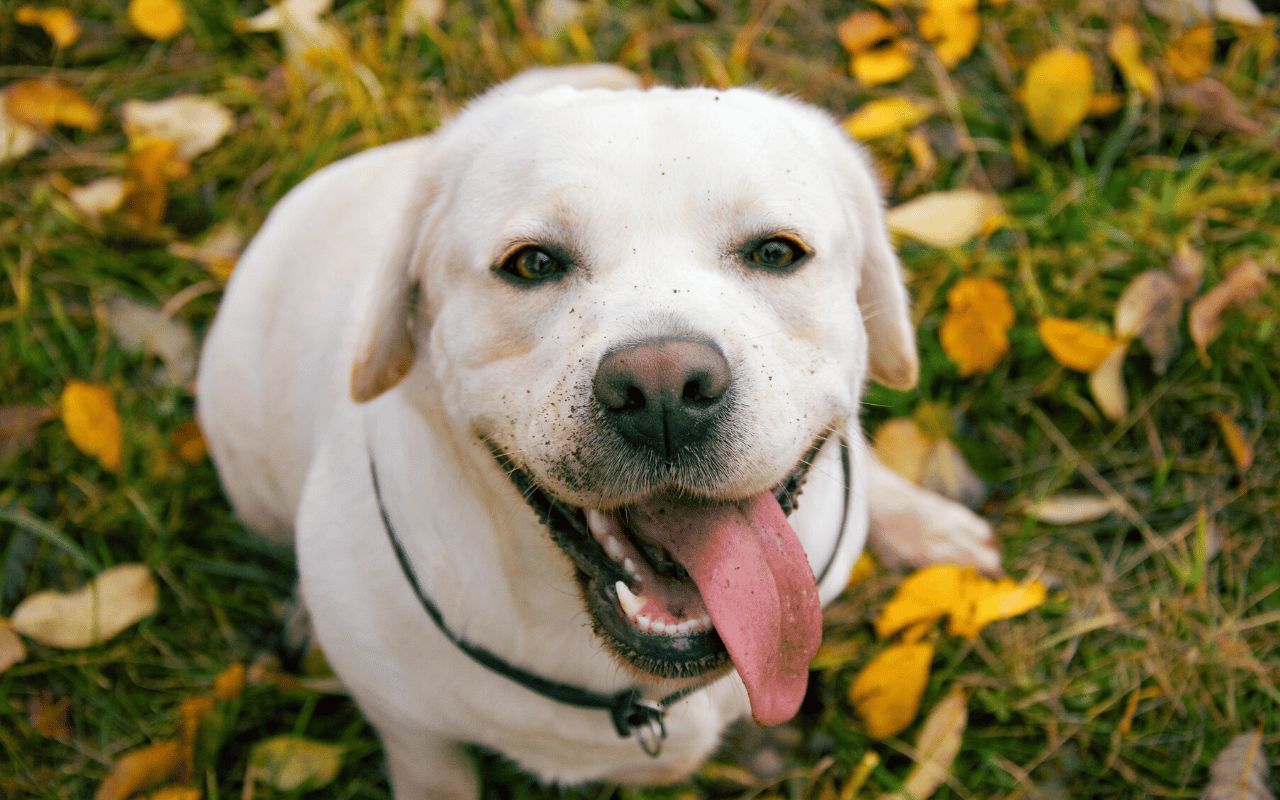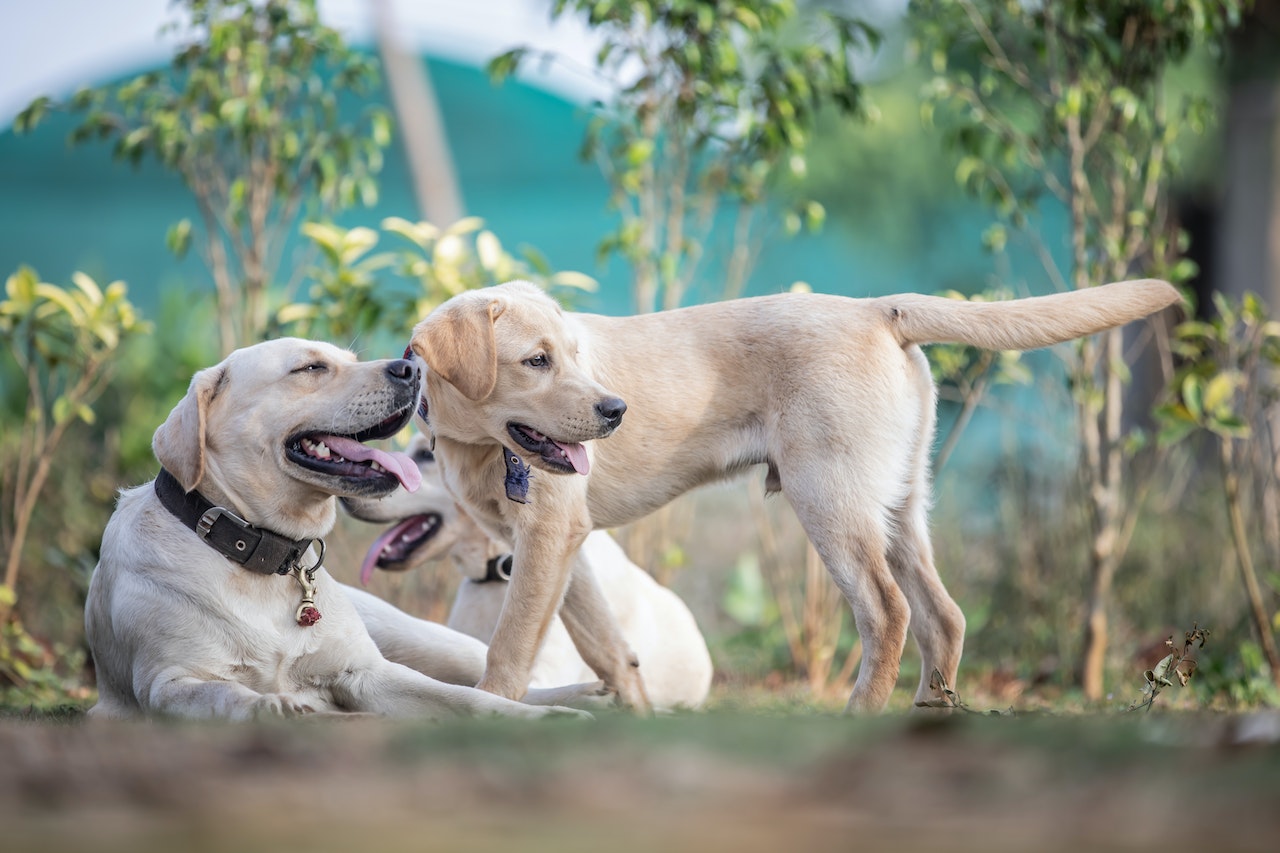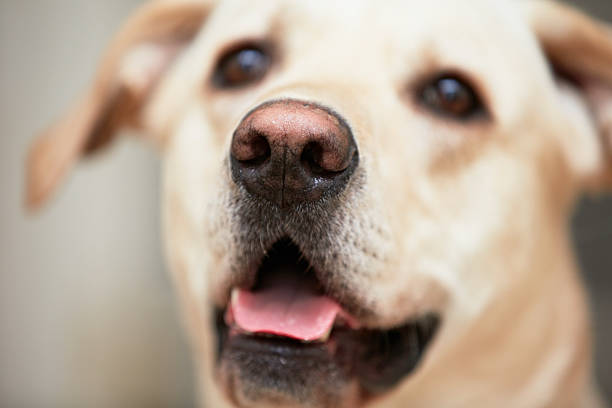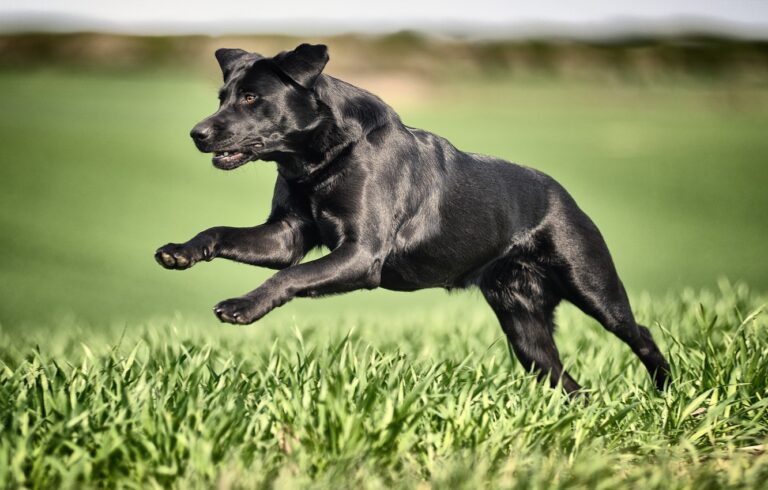Why Is My Labrador So Small
Are you concerned that your adult Labrador may not be as big as other Labradors? Despite being categorized as a big breed, it’s not uncommon to see a little Labrador Retriever out and about. Several factors might cause a Labrador to be tiny. Because of selective breeding, an imbalanced diet, or dwarfism, your Labrador is smaller than average.
There might be a problem with its food, it could be genetically tiny, fear might be the cause, or it might have a disease. For a variety of reasons, your Labrador may be little. When attempting to determine the precise cause, there are a few variables you may take into account, and there are several actions you can take about them.
Continue reading to learn why your Labrador is smaller than the typical Labrador. In-depth explanations of the causes of certain Labradors’ tiny stature are provided in this article. Additionally, it will point out which of your concerns are justified and which are reasonable. The article will conclude by discussing how to handle a small Labrador & what you can do to support it in living a healthy lifestyle given its size.
What is a Labrador Retriever
The lovely, sweet-faced Labrador Retriever is the most famous dog breed in America. Labs are sociable, gregarious, and loving companions with plenty of love to share for a family looking for a medium- to large-sized dog. The sturdy, well-balanced Labrador may weigh 55 – 80 pounds and stand 21.5 or 24.5 inches height at the shoulder, depending on the sex.
The thick, durable coat is available in rich chocolate, black, and yellow. The large head, friendly eyes, and thick tapering “otter tail” always communicate the breed desire. Labs are known for being amiable. They get along well with the whole family and are amiable roommates. They also get along well with the canines and people in the neighborhood.
The Lab is an eager athlete that needs loads of activity, such as swimming and marathons games of fetch, to be physically and mentally fit, so don’t mistake his laid-back demeanor for low energy.
History of Labrador Retrievers
Although their name could lead one to believe they originated in Labrador, Canada, Labrador Retrievers were developed in Newfoundland in the 1500s. A breed known as the St. John’s Water Dog or Lesser Newfoundland was developed by crossing tiny water dogs with Newfoundlands. These dogs, who belonged to fishermen, jumped into the frigid water to retrieve fish that had slipped the hooks.
They would also draw in nets with fish in them. The breed was ideal for these duties because of its water-repellent coat and good swimming abilities due to its webbed paws. The popularity of the breed started to rise. As American farmers and hunters became aware of the breed’s work ethic in the early 1900s, they started integrating “Labs” into their everyday routines. In 1917, the American Kennel Club acknowledged Labrador Retrievers, and many families adopted the breed as a devoted companion.
Labrador Retrievers are still eager to satisfy their pet owners and go to work today. Additionally, they are friendly, gregarious, bright, and nice to people, particularly kids and other animals. Although they don’t need much grooming, they require a lot of daily activity. They like taking frequent, strenuous walks, playing fetch, or even swimming in a secure environment. The AKC usually ranks them first among the most popular breeds.
Sign of Small Labrador
There are a few indications that your Labrador is a little dog. You may be shocked to learn that a smaller-than-average Labrador is only sometimes obvious. The majority of owners of little Labradors need to be made aware that their pup is unique compared to other Labradors.
If a Labrador weighs less than 50 pounds and is less than 20 inches in height, this is the clearest indication that it is little. Regularly weighing and height-measuring your Labrador can help you determine this. By the time they reach six months old, labradors typically weigh 50 to 60 pounds. Your Labrador has a good possibility of becoming a little Labrador if its growth is slower than average.
If your Labrador stops growing before it reaches one year old, it is a clue that it is a tiny breed. Before reaching their maximum size, average Labradors may continue to grow for 18 months. Small Labradors typically reach their peak size between 6 and 8 months of age.
Reasons why Labrador Getting Small
It’s time to identify the precise cause of your Labrador’s diminutive size. Before discussing the potential causes of your dog’s small size, it’s important to understand that you cannot diagnose your Labrador without the assistance of its breeder and your veterinarian. It’s preferable to seek a second opinion from a certified specialist and someone familiar with your dog’s DNA.
🐕Specialized Breeding
A growing number of pet owners and breeders are beginning to understand that they prefer smaller versions of huge canines as the popularity of designer breeds increases. People want to enjoy big dogs’ endearing personalities and gorgeous appearances without worrying about the expenses or difficulties associated with caring for a huge breed.
Due to this trend, breeders are beginning to utilize selective breeding to create little Labradors. Selective breeding is the technique by which dog breeders change a dog’s genetic makeup to ensure that it has certain features. In this instance, they breed Labrador runts together or cross-breed Labradors with smaller breeds to generate little Labradors.
Contact the breeder of your Labrador if you believe it is a result of selective breeding and request information about your dog’s medical history. The fact that your Labrador is partially purebred may surprise you. If you learn that your Labrador is a purebred canine, ask to meet its parents and learn their sizes. Because their parents are as little, small Labradors might also be small. In such a situation, it’s possible that the parents of your pup were the runts of the litter, which might later cause health issues for your dog.
🐕Dwarfism
Dogs with dwarfism have slow bone development because of a hereditary disease. Dogs with dwarfism have shortened legs, and they may even have deformed limbs or bone problems. If your Labrador’s legs don’t become longer as it matures, it probably has dwarfism. Because some careless breeders think it makes the dogs seem nicer, some dogs are bred specifically to carry the dwarfism gene. Other canines are just naturally born with this gene. It’s crucial to get your dog diagnosed by a veterinarian, no matter the reason.
Your Labrador may have a healthy life even if it is dwarf. Dwarf Labradors need more attention and care for their bones than typical Labradors since they are more sensitive to arthritis & spinal problems. To keep your dog safe and healthy, it’s recommended to get its bones tested at least twice a year.
🐕Malnourished
Pupils are less likely to reach their full genetic potential as adults when fed poorly. If you know that your LabLab has suffered from malnutrition, particularly as a puppy, this is probably the reason for its tiny size.
🐕Dietary Issues
Your Labrador’s food can also be a factor in its diminutive size. More food is required for labradors than you may imagine. Because they don’t become aware that a bigger physique implies a dog requires more food to have energy, owners of giant breed dogs sometimes underfeed their animals. Most pet owners also think a dog can survive on cheap dry food. Labradors have certain dietary requirements for their bodies to develop steadily and healthily.
They need minerals and vitamins that are lacking in typical dog food. It’s ideal for giving your Labrador premium dog food tailored specifically for their breed. Your Labrador puppy should have three meals per day totaling 1 1/4 cups of dog food from two to eight months. Once it reaches maturity, your dog should consume 2.5 cups of dog food in two daily meals.
🐕The Labrador Is Sick
Some sicknesses and parasite infections, like malnourishment, may result in stunted development in young dogs. Either the dog’s meal was not sufficiently digested owing to diarrhea or vomiting, or the parasites sucked all the nutrition out of it during ingestion.
🐕Anxiety
It’s possible that your Labrador lost weight unexpectedly after a traumatic incident due to stress or anxiety. This would be more probable if it began to lose weight after events like another pet passing away, being mistreated, or changing houses. In this situation, it would be crucial to address the problem, and it would be strongly advised that you seek the assistance of a veterinarian and a dog behaviorist.
🐕Illness
It may have a disease or a medical condition at the root of the problem. This would be more probable if it had suddenly shrunk in size or abruptly stopped feeding while exhibiting other symptoms of illness. It would be better to take it to the vet in this situation.
How to Make your Labrador Bigger
The following alternatives are available to you if your Labrador is little. The most probable reason will determine the optimal choice.
🐶Consult a Veterinarian
The best course of action would be to take it to the vet if you cannot determine why it is little, if it has shrunk quickly, or if it has been exhibiting symptoms of illness. By doing this, you can rule out the potential that it is a more severe problem and get professional advice catered specifically to your Labrador.
🐶Feed it Appropriately Based on the Degree of Exercise
Additionally, it would aid in ensuring that it receives the recommended number of calories each day. When you next visit them, it would be beneficial to discuss how much it is presently eating and if it needs to be eating more with your local veterinarian.
🐶Give it the Right Meals to Eat
As was already noted, you may have been giving it the improper diet. Click here for information on what foods to give dogs and which ones to avoid. If your Labrador shrank after you changed its food, it would also be far more probable that the problem stemmed from the new diet.
Small Labradors
As a result, we can observe that a healthy Labrador may weigh as low as 55 pounds. Additionally, deriving from English lineages might make a dog seem smaller. Therefore, being little needn’t be a cause for fear. But sometimes, breeders utilize selective breeding to produce Labradors that are even smaller than the typical size range. And it’s crucial to comprehend how various breeding procedures might impact puppy care when you see these pups promoted so you can make an educated choice.
How Breeders Make Small Labradors
Breeders will undoubtedly make an effort to satisfy demand wherever it exists. Breeders have attempted to miniaturize big dog breeds like Labrador in three different methods.
💡Out-Crossing Among Smaller Breeds
The size of mixed-breed dogs often falls between that of their parents. As an example, Miniature Labradoodles are the result of crossing a Labrador with a Miniature Poodle. Despite often being smaller than a purebred Labrador, they nonetheless exhibit certain distinctively Labrador characteristics.
This procedure allows pups to be produced by the healthiest parents while posing no unnecessary health hazards. The temperament with mixed breed dogs might vary considerably, and the offspring won’t be purebred Labradors.
Other small Labrador breeds include:
🔸Whipadors
🔸Corgidors
🔸Labrador mixes
💡Introducing The Dwarfism Gene
Dogs having dwarfism possess legs with disproportionally small bones. A single gene mutation, which may happen spontaneously or be brought about by mating with a different breed, is the root cause of many different kinds of dwarfism. However, a higher risk of bone conditions such as arthritis and spinal illness is associated with dwarfism. So breeding tiny Labs in this manner is not advised.
💡Using Runts in Breeding
Finally, there is some fluctuation in size between siblings in every Labrador litter. Runts are puppies that are substantially smaller than the rest of the litter and may even grow to be much smaller than adults. Mating runts may create a breeding line of abnormally tiny dogs from several litters over multiple generations.
Although runts that don’t catch up in size and their litter will be purebred Labrador, they sometimes suffer from malnutrition and lack the immunity from their mother’s milk. Small canines that are prone to disease and underachieve may be produced by reproducing these issues over numerous generations.
Size Prediction for Labradors
The truth is that there are no assurances, and it may be tough. Several things influence the mature size of a Labrador. However, the size of their parents is one of the most accurate indicators when two healthy Labrador retrievers at the low end of the breed’s typical weight range mating. The pups they have will probably be tiny for Labs as well.
When you phone to inquire about a litter, you may question breeders about the size of their sire and mother, or you can find out which waiting list to join. But be ready to learn that your puppy could still surpass your expectations.
Worrying for Small Labradors
There is a surprisingly wide range of healthy weights for labradors. Even though our LabLab appears so different from all the others we meet, we still worry. The well-being of your Labrador is better determined by their general health, temperament, and physical condition than by their size or weight. Ask your veterinarian to examine your tiny LabLab if you are concerned that its size is outside of the range considered healthy and that this harms them.
Labrador Common Health Problems
Now that you know why your Labrador is small, let us take a look at the common health problems of the labrador retriever. The UK Kennel Club now assigns Labradors to category 2, suggesting they have certain issues that, should they escalate, might eventually threaten the breed’s health and welfare. These are the health problems that affect Labradors the most often.
🔎Hip Dysplasia
Hip dysplasia is a disorder caused by improper hip socket development that predisposes Labradors to hip degeneration. Common symptoms include a ‘rabbit hopping’ stride, difficulty ascending or descending stairs, lameness in the back legs, soreness, stiffness, or limping. This disease often causes the future onset of arthritis. Therefore, to assist in lowering the chance of hip dysplasia being inherited, breeding dogs should have their hips evaluated before mating.
🔎Arthritis
Due to their size and the stress this puts on their joints, Labradors often have arthritis, particularly as they age. Because obesity may put undue pressure on their joints and raise their risk of arthritis, it’s crucial to maintain your Labrador healthy with regular exercise and proper nutrition.
🔎Elbow Dysplasia
The elbow joint’s improper growth and development are what lead to elbow dysplasia. Forelimb lameness, discomfort with elbow mobility, a potential joint effusion, and a reduced range of motion are all signs of this disorder. In order to recover range of motion, surgery and physical therapy may be required to remove cartilage and bone pieces. Again, prospective breeding dogs should have their elbows scored.
🔎Hypothyroidism
Lowered T4 and T3 hormone synthesis and release from the thyroid gland leads to hypothyroidism, an endocrine condition. Labradors are more susceptible to developing this illness, which may cause weight gain, loss of hair, lethargy, and an aversion to the cold.
🔎Laryngeal Paralysis
An alteration in the muscles inside the larynx results from laryngeal paralysis, which affects or inhibits airflow through the organ. The common symptoms of this ailment include a bark that makes a “honking” sound increased respiratory exertion, coughing, and a lack of motivation to exercise.
🔎Obesity
Labradors are absolute foodies, but this may also lead to weight problems. Fortunately, it’s rather simple to avoid. Watch their eating habits to ensure they don’t overindulge or eat too rapidly and limit their snacking.
The risk of joint disorders (including arthritis), bone problems, metabolic and respiratory ailments, and heart and liver disease is increased in Labradors that are obese. Additionally, allowing your LabLab to overeat or drink excessive amounts of water might result in bloat. Although it may seem unimportant, this can relate to dogs’ twisted or bloated stomachs. Due to their deep chests, Labradors are more prone to bloat.
🔎Ear Infections
The wide, floppy ears on labradors contribute to their adorable look, making them more prone to ear infections. After bathing and swimming, be careful to wipe their ears and be sure to check their eyes and ears for infection routinely.
🔎Progressive Retinal Atrophy
The term “progressive retinal atrophy” describes a variety of illnesses that may cause the retina to deteriorate gradually. Large portions of their central vision may gradually be lost in bigger breed dogs like Labradors, who are especially susceptible to it.
🔎Heart Problems
Older dogs often have heart disease, which may manifest as weariness, cough, lack of appetite, a large tummy, breathing problems, and weight loss. A prevalent health condition in Labradors is tricuspid valve dysplasia (TVD), which mostly affects male dogs and is present from birth. A heart murmur and symptoms of congestive heart failure are often the earliest warning indications of this ailment, which is brought on by a flaw in the right-side heart valve.
Unfortunately, there is no known treatment for this condition. However, diuretics may be provided to minimize fluid retention, and less activity may be advised to attempt to lessen the pressure on the dog’s heart. While most dogs with moderate forms of TVD may live happy, normal lives, those with more severe cases are more likely to develop congestive heart failure.
Preventing Labrador Health Problems
The health as mentioned above problems in Labradors is just the situations to which the breed is more prone. Although they are more susceptible, there is no assurance that your dog will develop these issues. You must get pups from a reputable breeder who is informed and concerned about the breed’s future if you want to lower the possibility that your dog may experience these problems.
In order to prevent the pups from inheriting bad genes, ethical breeders will also see to it that the parents undergo essential examinations and testing. Once you have a puppy, decent, full, and balanced food and regular exercise will keep them healthy and happy for the rest of their lives.
Frequently Asked Questions
How Old Are Labradors When They Stop Growing?
A labrador should reach sexual maturity between the ages of one and one and a half. You should see a veterinarian to rule out any health issues that may cause your dog’s decreased size if your LabLab appears to have stopped growing much earlier than this.
Why Isn’t My Lab Growing?
Your Labrador may have a medical problem that is inhibiting his development if he stops growing before becoming a year old. This can result from heredity or an outside issue, such as a bad diet.
How Long Do Labradors Remain Small?
At three months old, labs typically weigh about 20 pounds & stand 15 inches tall. This diminutive stature, nevertheless, is short-lived. At six months old, which is approaching adult size, the majority of labrador pups weigh roughly 45 pounds and are 20 inches tall. Between the ages of 11 and 18 months, labradors are often regarded as fully mature.
How Can I Make My Labrador Grow Faster?
A dog’s growth cannot be accelerated once it reaches its maximum size. However, you may avoid stunted development by giving your nutritious puppy food and making sure they are parasite-free.
What kind of Labrador is the smallest?
The Mini Labrador Retriever, also called the Toy Lab, Teacup Lab, and Canoe Lab, is just a Labrador Retriever between 20 and 40 pounds lighter and between 2 and 6 inches shorter than his standard Lab counterpart.
Final Thoughts
Do you now know the reasons why your Labrador is small? Toys and small breeds are becoming more and more popular nowadays. However, the Labrador retriever does not have an official toy or miniature counterpart. Any breeders advertising teacups, toys, or tiny labs are probably unethical and peddling pups with long-term health issues. On the other hand, some labrador mix breeds are smaller and more likely to live long, healthy lives.











